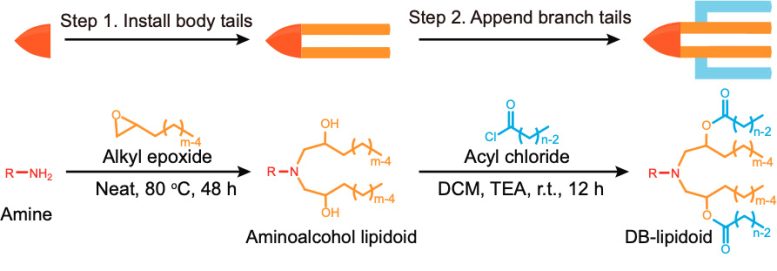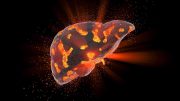
Penn Engineering researchers have developed a new method for synthesizing a critical component of lipid nanoparticles (LNPs), inspired by space shuttle design. This innovation simplifies LNP production and enhances mRNA delivery to cells, with promising applications in treating obesity and genetic diseases. The technique involves a novel synthesis strategy that mimics the space shuttle’s booster rockets, significantly improving the efficiency of mRNA delivery.
Drawing inspiration from space shuttle technology, researchers at Penn Engineering have developed a novel method for synthesizing a crucial element of lipid nanoparticles (LNPs). These LNPs are pivotal in administering mRNA therapies, such as the Pfizer-BioNTech and Moderna COVID-19 vaccines, by improving both the simplicity of LNP production and their effectiveness in transporting mRNA into cells for medical treatments.
In a paper in Nature Communications, Michael J. Mitchell, Associate Professor in the Department of Bioengineering, describes a new way to synthesize ionizable lipidoids, key chemical components of LNPs that help protect and deliver medicinal payloads. For this paper, Mitchell and his coauthors tested delivery of an mRNA drug for treating obesity and gene-editing tools for treating genetic disease.
Streamlining the Production Process
Previous experiments have shown that lipidoids with branched tails perform better at delivering mRNA to cells, but the methods for creating these molecules are time- and cost-intensive. “We offer a novel construction strategy for rapid and cost-efficient synthesis of these lipidoids,” says Xuexiang Han, a postdoctoral student in the Mitchell Lab and the paper’s co-first author.

The new molecules, inspired by the design of the space shuttle’s twin booster rockets, improve the efficacy of lipid nanoparticles for drug delivery while simplying their manufacture. Credit: Mitchell Lab
The method involves combining three chemicals: an amine “head”, two alkyl epoxide “tails” and, finally, two acyl chloride “branched tails.” The completed lipidoid’s resemblance to a space shuttle strapped to two booster rockets is not coincidental: in college, recalls Han, a documentary about the space shuttle left him impressed with the design of solid rocket boosters that enabled the shuttle to enter orbit. “I figured that we could append two branch tails as ‘boosters’ into the lipidoid to promote the delivery of mRNA,” says Han.
Indeed, the addition of the branched tails led to a striking increase in the ability of LNPs equipped with the new lipidoid to deliver mRNA to target cells, much like a rocket whose boosters allow it to more easily penetrate the atmosphere. “We saw a dramatic increase of a hormone that regulates metabolism to target cells after delivering mRNA using these lipidoids, which is really exciting when you consider it as a way to treat obesity,” says Mitchell.
Reference: “In situ combinatorial synthesis of degradable branched lipidoids for systemic delivery of mRNA therapeutics and gene editors” by Xuexiang Han, Junchao Xu, Ying Xu, Mohamad-Gabriel Alameh, Lulu Xue, Ningqiang Gong, Rakan El-Mayta, Rohan Palanki, Claude C. Warzecha, Gan Zhao, Andrew E. Vaughan, James M. Wilson, Drew Weissman and Michael J. Mitchell, 26 February 2024, Nature Communications.
DOI: 10.1038/s41467-024-45537-z
This study was conducted at the University of Pennsylvania School of Engineering and Applied Science and supported by the National Institutes of Health (Award DP2 TR002776); Burroughs Wellcome Fund Career Award at the Scientific Interface; National Science Foundation CAREER Award (CBET-2145491) and the American Cancer Society (Grant RSG-22-122-01-ET).
Other co-authors include Junchao Xu, Lulu Xue, Ningqiang Gong and Rohan Palanki from Penn Engineering; Mohamad-Gabriel Alameh, Rakan El-Mayta, Claude C. Warzecha, James M. Wilson and Drew Weissman in the Perelman School of Medicine at Penn; Gan Zhao and Andrew E. Vaughan from Penn Vet; and Ying Xu of Case Western Reserve University.









Be the first to comment on "Weight Loss Launchpad: Space Tech Boosts Obesity mRNA Treatment Efficacy"